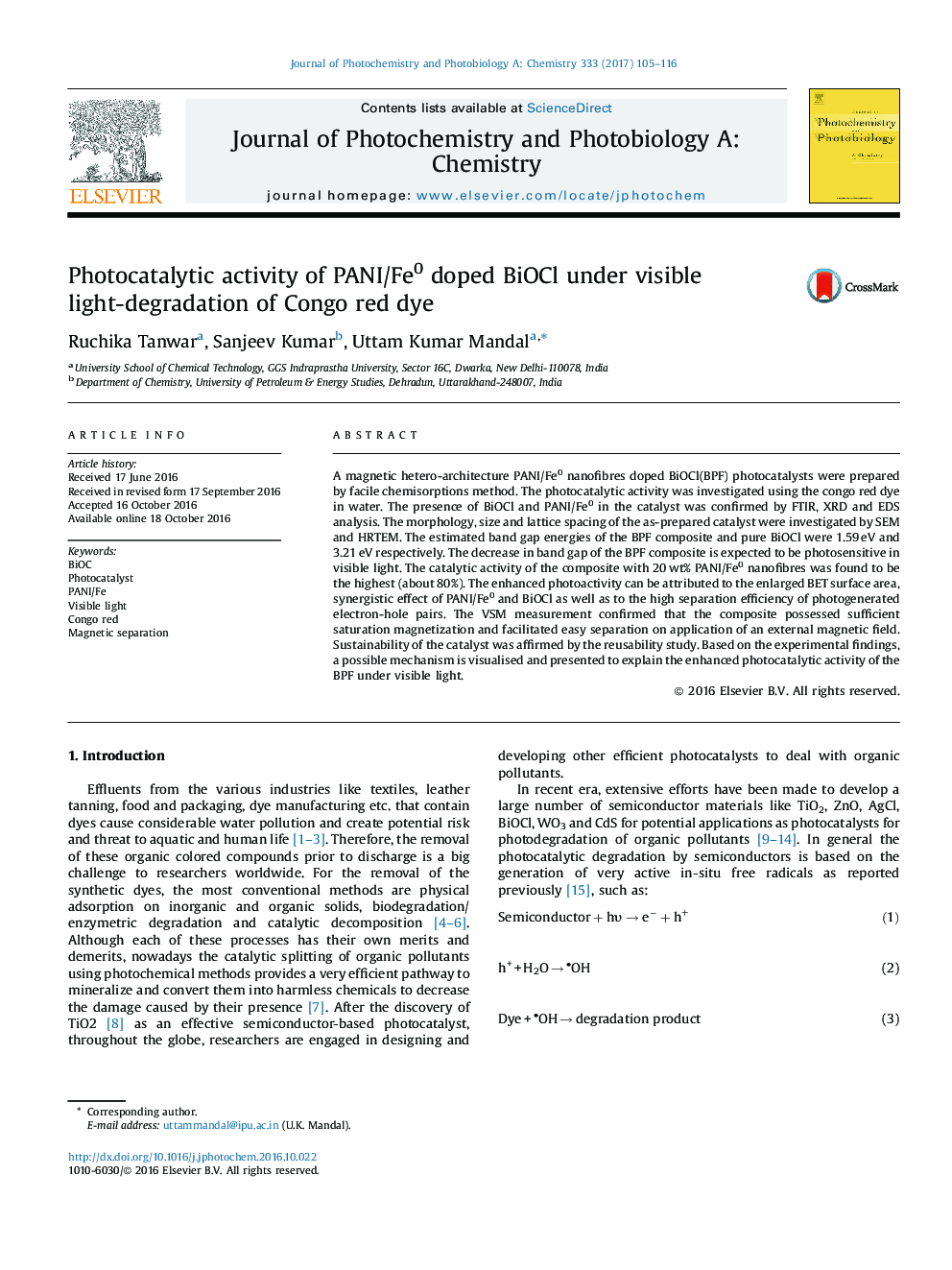| Article ID | Journal | Published Year | Pages | File Type |
|---|---|---|---|---|
| 6452468 | Journal of Photochemistry and Photobiology A: Chemistry | 2017 | 12 Pages |
â¢A hetero-architecture BiOCl/PANI/Fe0 visible light active photocatalyst was prepared.â¢A synergistic effect of PANI/Fe0 and BiOCl for the congo red dye degradation was observed.â¢The separation of photogenerated electro-holes may efficiently increase the photocatalytic potential of the catalyst.â¢Easy separation, reusability and potential CR dye degradation were key features of BiOCl/PANI/Fe0.â¢Use of BiOCl/PANI/Fe0 as a green and sustainable catalyst in environmental remediation.
A magnetic hetero-architecture PANI/Fe0 nanofibres doped BiOCl(BPF) photocatalysts were prepared by facile chemisorptions method. The photocatalytic activity was investigated using the congo red dye in water. The presence of BiOCl and PANI/Fe0 in the catalyst was confirmed by FTIR, XRD and EDS analysis. The morphology, size and lattice spacing of the as-prepared catalyst were investigated by SEM and HRTEM. The estimated band gap energies of the BPF composite and pure BiOCl were 1.59Â eV and 3.21Â eV respectively. The decrease in band gap of the BPF composite is expected to be photosensitive in visible light. The catalytic activity of the composite with 20Â wt% PANI/Fe0 nanofibres was found to be the highest (about 80%). The enhanced photoactivity can be attributed to the enlarged BET surface area, synergistic effect of PANI/Fe0 and BiOCl as well as to the high separation efficiency of photogenerated electron-hole pairs. The VSM measurement confirmed that the composite possessed sufficient saturation magnetization and facilitated easy separation on application of an external magnetic field. Sustainability of the catalyst was affirmed by the reusability study. Based on the experimental findings, a possible mechanism is visualised and presented to explain the enhanced photocatalytic activity of the BPF under visible light.
Graphical abstractDownload high-res image (96KB)Download full-size image
